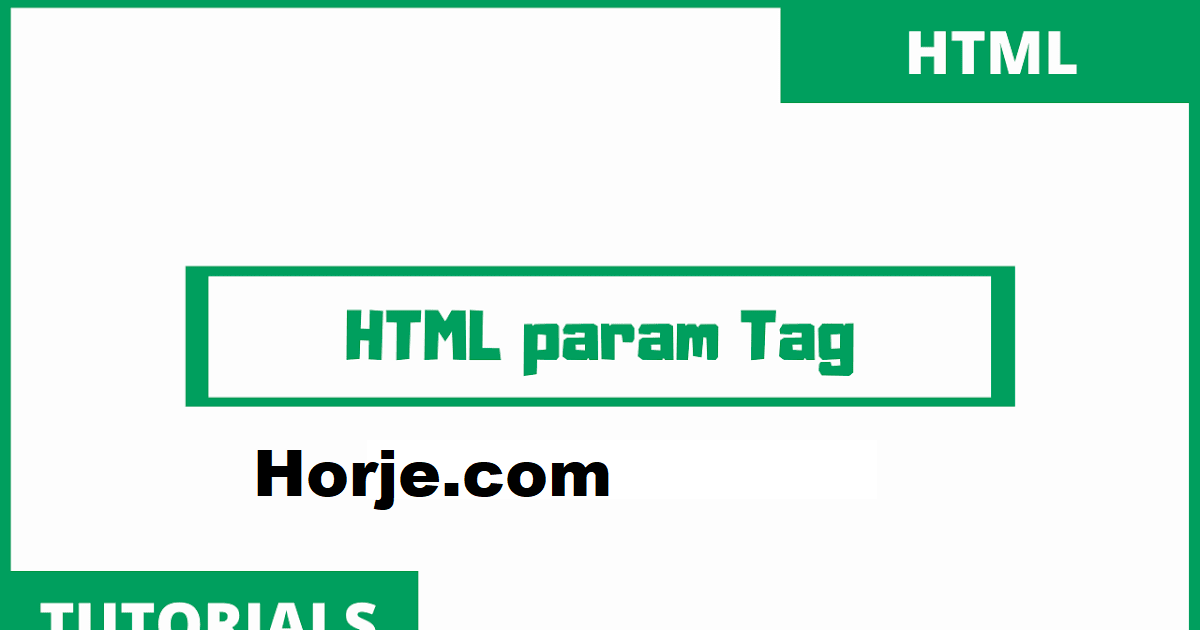
|
|
The <param> tag in HTML is used to define a parameter for plug-ins that are associated with <object> element. It does not contain the end tag. The Definition and UsageThe Browser SupportThe
Attributes
Global AttributesThe <param> tag also supports the Global Attributes in HTML. Event AttributesThe |
How to add HTML <param> Tag
It sets the "autoplay" parameter to "true", so the sound will start playing as soon as the page loads:
index.html
Example:
HTML
<object data="horse.wav">
<param name="autoplay" value="true">
</object>
Output should be:

How to set Default CSS Settings on HTML <param> Tag
Most browsers will display the <param> element with the following default values.
index.html
Example:
HTML
<style>
param {
display: none;
}
</style>
<object data="horse.wav">
<param name="autoplay" value="true">
</object>
Output should be:

What is HTML <param> name Attribute
Definition and Usage
The name attribute specifies the name of a <param> element.
The name attribute is used together with the value attribute to specify parameters for the plugin specified with the <object> tag.
The name attribute value can be any name supported by the specified object.
Browser Support

The name attribute is supported in all major browsers. However, the file format defined in <object> may not be supported in all browsers.
Syntax
<param name="name">
Attribute Values
| Value | Description |
|---|---|
| name | The name of the parameter |
How to add HTML <param> name Attribute
It sets the "autoplay" parameter to "true", so the sound will start playing as soon as the page loads:
index.html
Example:
HTML
<!DOCTYPE html>
<html>
<body>
<h1>The param element</h1>
<object data="horse.wav">
<param name="autoplay" value="true">
</object>
</body>
</html>
Output should be:

What is HTML <param> value Attribute
Definition and Usage
The value attribute specifies the value of a <param> element.
This attribute is used together with the name attribute to specify parameters for the plugin specified with the <object> tag.
The value can be any value supported by the specified object.
Browser Support

The value attribute is supported in all major browsers. However, the file format defined in <object> may not be supported in all browsers.
Syntax
<param value="value">
Attribute Values
| Value | Description |
|---|---|
| value | The value of the parameter |
How to add HTML <param> value Attribute
It sets the "autoplay" parameter to "true", so the sound will start playing as soon as the page loads:
index.html
Example:
HTML
<!DOCTYPE html>
<html>
<body>
<h1>The param element</h1>
<object data="horse.wav">
<param name="autoplay" value="true">
</object>
</body>
</html>
Output should be:

| html param |
| How to add HTML <param> Tag | HTML Tag |
| How to set Default CSS Settings on HTML <param> Tag | HTML Tag |
| What is HTML <param> name Attribute | HTML Tag |
| How to add HTML <param> name Attribute | HTML Tag |
| What is HTML <param> value Attribute | HTML Tag |
| How to add HTML <param> value Attribute | HTML Tag |
Type: | Develop |
Category: | Web Tutorial |
Sub Category: | HTML Tag |
Uploaded by: | Admin |
Reffered: https://www.w3schools.com/tags/tag_param.asp
